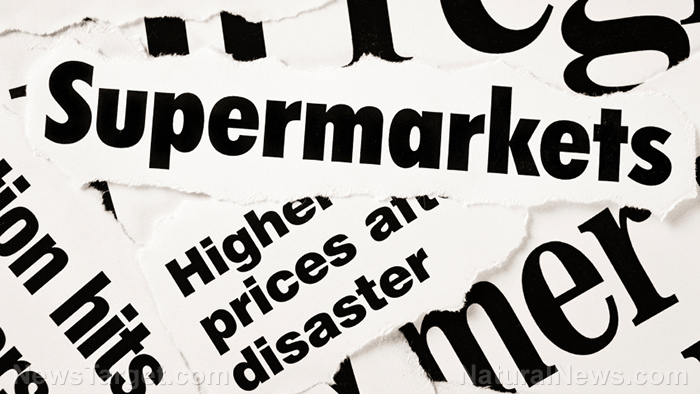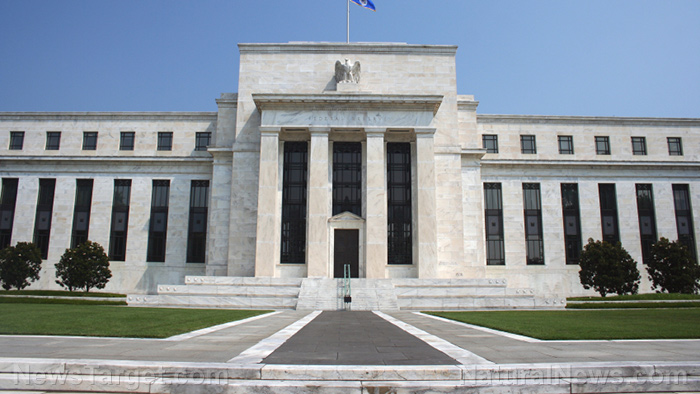Online shopping hit by inflation during pandemic
09/17/2021 / By Mary Villareal

Online goods have seen a rise in prices for an unprecedented 15 months as inflation hits categories such as pet products, nonprescription drugs, groceries, furniture and flower arrangements, according to reports.
The growth in digital prices across the industry means that e-commerce transactions are set to account for roughly $1 of every $5 spent by Americans, up from $1 of every $6 in 2017. These insights come from tracking more than 1 trillion visits to U.S. retail sites and over 100 million products across 18 categories.
Prices for online goods grew 3.1 percent year over year and climbed 0.1 percent from the previous month. From 2015 to 2019, online prices decreased 3.9 percent annually.
Apparel has the most noticeable online price increase with a 15.5 percent year-over-year increase in August, and a 15.3 percent year-over-year increase in July. These price gains are happening during a period that normally sees price drops. Retailers tend to use promotions to clear out merchandise at the end of summer and to win customer loyalty as they complete back-to-school shopping. However, this was not the case this year.
Adobe Digital Insights lead analyst Vivek Pandya said that the categories that had a minor presence in e-commerce are not becoming staples, and unprecedented pricing trends can no longer hold down the overall inflation. Given this trend, Adobe is forecasting that by November 1, Americans will have spent more online than they did in the entire year of 2019.
Consumers already spent over $541 billion in online spending in the first eight months of 2021, up 9 percent from the previous year, and up 58 percent from the same period in 2019.
The Labor Department said that prices for consumer goods rose less than expected in August, which could mean that inflation is starting to cool, but the data did not include online prices.
Adobe found that online prices rose by 2.3 percent during the 12 months ending in June, and gathered momentum in July. This isn’t a glitch in spending, either. Online prices have been rising soon after the eruption of the COVID-19 pandemic in March 2020 and the trend has since continued.
Why has inflation affected online shopping?
E-commerce does not exist in a vacuum; therefore, it makes sense for online prices to reflect the environment as a whole. The price of everything is simply going up.
However, online inflation remains a big deal because falling e-commerce prices are often cited as the reason inflation should eventually return to normal levels.
Government-measured inflation has been rising, and Adobe traces this back on supply chain bottlenecks — the same challenges that contributed to delayed furniture shipments and shortages in the past months.
“The bulk of the recent upturn in U.S. inflation has been driven primarily by supply chain bottlenecks and low levels of inventories, but higher labor costs are often passed on to consumers and are considered a precursor of broader inflation,” said National Retail Federation chief economist Jack Kleinhenz. (Related: Why inflation is at a 12-year high.)
Demand is also a factor. The COVID-19 pandemic closing down brick-and-mortar stores and made shoppers nervous about going outside. This drove even more demand to online shopping, which has already enjoyed explosive growth long before the pandemic.
Jerome Powell, chair of the Federal Reserve said that the inflation is likely “transitory,” and that it will cool off as the economy reopens, however, he is also aware that there is a risk that investors could be wrong and that the inflation can stay longer than anticipated.
On the other hand, the CEOs of BlackRock and J.P. Morgan recently said that they don’t believe inflation is temporary.
“Considering that many were unable to leave their homes in 2020, the year-over-year growth highlights the staying power of habits formed during the pandemic,” says Adobe.
Read more at Bubble.news.
Sources include:
Tagged Under: bubble, collapse, credit markets, debt, e-commerce, economics, economy, Federal Reserve, financial market, inflation, investors, money supply, national debt, online shopping, online spending, recession, system failure, US Treasury
RECENT NEWS & ARTICLES
COPYRIGHT © 2020 Debtbomb.news
All content posted on this site is protected under Free Speech. Debtbomb.news is not responsible for content written by contributing authors. The information on this site is provided for educational and entertainment purposes only. It is not intended as a substitute for professional advice of any kind. Debtbomb.news assumes no responsibility for the use or misuse of this material. All trademarks, registered trademarks and service marks mentioned on this site are the property of their respective owners.




















